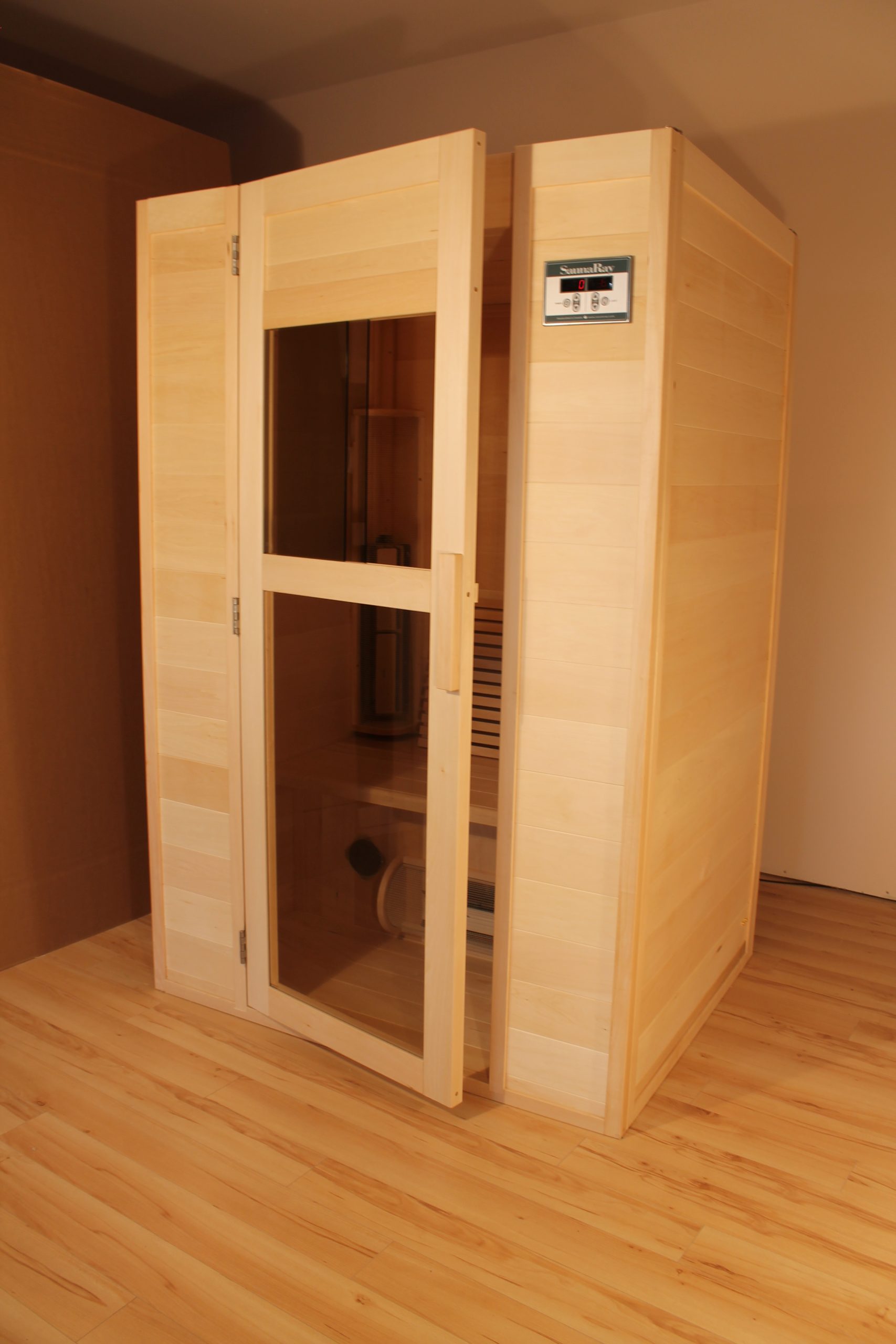When people ask us “Why are there so many sauna types?” we always explain that there is a different sauna for every type of person. Super-hot saunas are the traditional sauna type that most people have experienced at some point in their lives. Either in a hotel or a local gym, the super-hot saunas were once the most common sauna type.
These are the European-style sauna types that came to North America with the Scandinavians in the 1950s and 1960s. This was the first of the sauna types in the typical North American home. They weren’t easy to build because they required a lot of insulation to maintain the high temperatures. They also require a lot of electricity to run them because those big heaters burn a lot of energy in order to keep the room so hot. They also require a drain and usually a water source because people like to splash water on the hot rocks on top of the heater and create steam. Creating steam burns the skin a little and stimulates peripheral circulation. This can be exhilarating for some, but many people also find it painful and difficult to breathe because it singes the inside of their nostrils when they breathe air and steam that is this hot.
As time went on people opened summer cottages in the lakes just outside of the cities of so many Canadian and northern US regions. The new sauna type at the cottages were off-grid so they didn’t tax the electricity which was always limited at the summer cottage, if it existed at all. Wood-fired became the new sauna type at the summer cottage. Drains weren’t a problem because the floor could drain right onto the ground below. And the lake was the water source, and a pail was the way people carried it into the sauna. This is a very earthy and grounding natural heat experience, but it requires a lot of work. You first need a wood pile, and then you must light the fire and tend to it for at least an hour, or more in order to get the sauna slowly hot enough to use. This wood-fired sauna type has the same attribute as the home-based electric European style sauna, it gets super-hot. Usually 80-90C and often many in the family can’t tolerate that high heat.
Since the human body has only adapted to breathe a high of 40-50C, many people experience anxiety and stress in the European sauna type, and in the wood-fired cottage sauna type as well.
Enter the infrared sauna: The new sauna type that is sweeping North America. Infrared saunas, when properly designed, can make you sweat without raising your core body temperature. They operate from 25-45C and it’s easy to breathe inside. The original infrared saunas were used by medical doctors in the early 2000s. They were designed specifically to ensure chronically ill patients could tolerate the heat level. The lower temperature in this sauna type is mostly experienced below the core body temperature of 37C. That’s why it’s so easy to breathe inside.
The European sauna type operates so hot because it’s designed to raise your core body temperature. As soon as you breathe that 60-80C air, your autonomic nervous system kicks into effect and helps you to pump blood to the extremities in order to cool off your organs. That means your heart rate goes up and your blood temperature and blood pressure as well.
The infrared sauna types changed all that. The lower temperature, especially from natural pure ceramic heating elements, allows you to breathe normally. The heat from the ceramic is in the infrared spectrum of heat waves, exactly where the human body likes to absorb heat. That means you sweat profusely without ever raising your core body temperature.
Firefighters even use them while on duty because they can remain in service and call ready, while the ceramic infrared heating elements gently warm their skin and cause the sweat glands to activate from external heat stimulus. This way they can be ready for the next emergency and not worry about already being overheated from the sauna.
Infrared sauna types are so common now because they can be made to plug into a regular household outlet. The smaller one and two person units don’t require any special wiring. They can be assembled quickly in a bedroom, spare room or hallway. And because they don’t get super-hot there is no heat loss through the walls. People stand them up in corners of any room and barely notice they are on while in use. They can be pushed up flush against any wall and easily integrated into any room of the home.
This sauna type is easily the most versatile. They can even be disassembled and moved to a new home just as easily as they are set up in the first place.
The best infrared sauna type is one that uses ceramic elements to heat the cabin. This type of element is the most natural because it is made largely of silica, or beach sand. This means your skin naturally absorbs the heat from this sauna type very efficiently. You sweat more easily. The ceramic elements are also toxin-free because they are kiln fired over 700C at least twice which means they can never off gas any toxic substances when you are using them are only 40-50C.
The best wood in selecting an infrared sauna type is Basswood because it is the least allergenic wood in North America. It is used most commonly in tongue depressors and popsicle sticks because you can put it in your mouth without any negative effects. This is the wood preferred by medical doctors and naturopaths when prescribing sauna therapy to their patients because even if they are chemically sensitive, they can normally tolerate the scent-free Canadian Basswood. Other woods such as cedar and hemlock are too aromatic for this sauna type, as demanded by doctors and their patients. Finally, the leading style of this sauna type is made in Canada and entirely toxin-free. See SaunaRay.com for more information.


